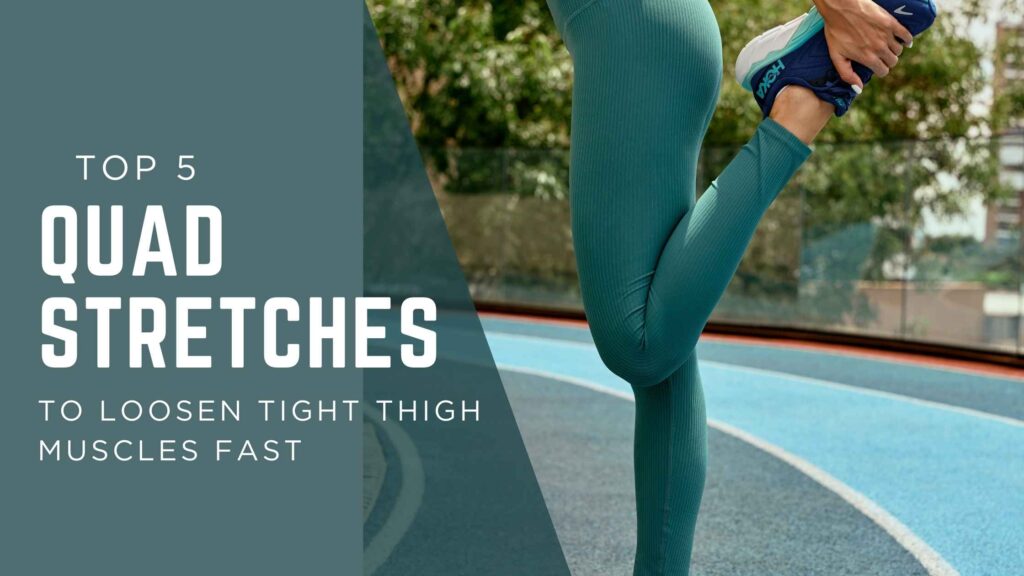If you’ve ever experienced tightness, soreness, or pain in your thighs after a challenging workout, you probably need some good quad stretches. Learning how to stretch quads effectively can significantly enhance your flexibility, reduce your risk of injury, and boost overall athletic performance. As a stretching expert, I assure you that regularly incorporating these stretches into your routine will improve your comfort and mobility.
Why Quad Stretches Are Essential
The quadriceps, or quads, are the muscles at the front of your thigh. These powerful muscles play a crucial role in daily movements like walking, running, squatting, and standing. When tight, they can pull on your hips and knees, leading to discomfort or injury.
Benefits of Regular Quad Stretching
- Improved Flexibility: Keeps your muscles supple for better movement.
- Reduced Risk of Injury: Flexible muscles are less prone to strains and tears.
- Better Posture and Alignment: Helps maintain proper hip and pelvic alignment.
- Enhanced Athletic Performance: Boosts performance across a variety of sports.
How to Stretch Quads Properly: Best Practices
Learning how to stretch quads correctly is key to maximizing benefits and preventing injury.
1. Warm Up First
Always warm up with light cardio (like a 5–10 minute walk or jog) before stretching.
2. Hold Each Stretch
Maintain each stretch for 20–30 seconds while breathing steadily.
3. Avoid Pain
Stretch to a point of gentle tension—not pain. Overstretching increases the risk of injury.
Effective Quad Stretches You Should Do
Incorporate these top quad stretches into your routine for optimal flexibility and relief.
1. Standing Quad Stretch
- Stand upright, holding a wall or chair for balance.
- Grab your ankle and pull your heel toward your glutes.
- Hold for 30 seconds per leg.
2. Lying Side Quad Stretch
- Lie on your side with your body straight.
- Bend the top leg and grab your ankle.
- Pull the heel toward your buttocks and hold for 30 seconds.
3. Kneeling Quad Stretch
- Kneel on one knee with the opposite foot forward.
- Push hips forward gently, keeping the torso upright.
- For a deeper stretch, grab your foot behind you.
4. Reclined Quad Stretch
- Sit on your heels and slowly lean back.
- Use your hands for support behind you.
- Hold for 30 seconds, then return to an upright position.
5. Prone Quad Stretch
- Lie face down.
- Grab one ankle and gently pull the heel toward your glutes.
- Hold for 30 seconds, then switch legs.
Common Mistakes When Stretching Quads
Avoid these pitfalls to ensure safe and effective quad stretches:
- Bouncing: Can cause microtears and injury.
- Holding Your Breath: Breathing helps muscles relax.
- Overstretching: Causes pain and reduces long-term flexibility.
When Should You Do Quad Stretches?
Timing is everything for effectiveness:
- Post-Workout: Reduces muscle soreness and stiffness.
- Morning: Loosens tight muscles after sleep.
- Evening: Relaxes the body before bed and promotes recovery.
Incorporating Quad Stretches Into Your Routine
Consistency is key. Aim to stretch your quads at least 3–4 times per week, adjusting based on how your body feels.
Conclusion: Unlocking Better Mobility with Quad Stretches
Mastering how to stretch quads effectively can dramatically improve your mobility, athletic performance, and daily comfort. Stay consistent, gentle, and mindful—and your flexibility will reward you.
FAQ About Quad Stretches
Can I stretch my quads every day?
Yes! Daily quad stretching is safe and beneficial when done gently.
How long does it take to see results from quad stretches?
Most people notice improvements in flexibility within 2–4 weeks of consistent stretching.
Are quad stretches safe for people with knee pain?
Generally, yes—but consult a healthcare provider if you have chronic or acute knee issues.
What should I do if quad stretching causes discomfort?
Ease off the intensity or pause the stretch. Mild discomfort is okay; pain is not.
Can stretching quads help with lower back pain?
Absolutely. Tight quads can affect pelvic tilt and contribute to lower back pain. Stretching them can help reduce symptoms.
